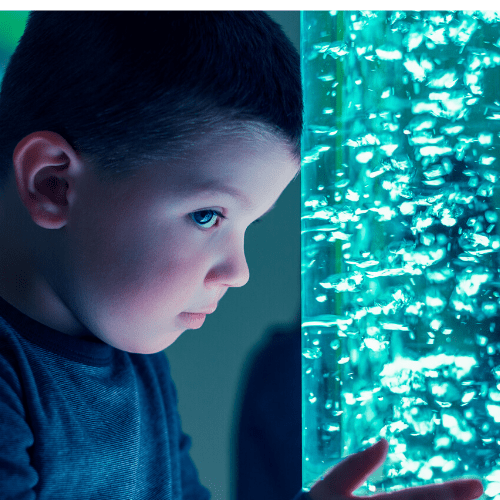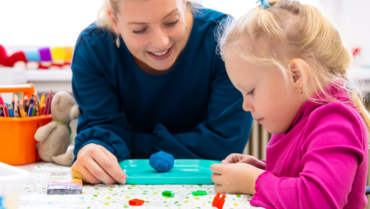Sensory Processing Disorder or (SPD) is essentially a neurological condition that can impair the sensory functioning skills of both children and adults. People with SPD (and of course there are varying degrees of the condition) – misinterpret everyday sensory information such as touch, sound and movement.
In general, people with SPD experience their world as either hypersensitive which means they may be seeking to avoid sensory input. For example, they may be unable to tolerate bright lights and loud noises or even refuse to wear certain types of clothing because of the texture and how it feels on their skin.
Or they may be hyposensitive, which means they may actively seek out sensory input. For example, a constant need to touch people even when it’s not socially acceptable, or simply loving jumping, bumping and crashing activities for the sheer sensory experience!
Sensory issues, in some circumstances can also create extreme behaviours. For example, there may be a dramatic mood swing in reaction to a change in the environment. A person might be fine in a quiet setting with a calm adult, but in a shopping centre filled with people, noise and lights have ‘sensory overload’ and they may be unable to cope.
What are the triggers of SPD?
Given the varying levels of SPD between individuals, our comments here are more general in nature and, of course, we always recommend a professional diagnosis. This said, as it is a common condition in both adults and children, there has been much research on how SPD ‘functions’ and it typically points to both the operation of the brain and nervous system. In simple terms, the brain and nervous system receive input from body parts as well as from the outside world. The central nervous system also transmits messages throughout the body so functions a little like a computer system.
Nervous system impacts
In the case of the nervous system, the messages communicate functions such as muscle movement, coordination, learning, memory, emotion, behaviour and even thought. As with the computer example, a breakdown or malfunction in one part of the system can affect other functions of the system.
Brain impacts
All sensations from hearing, vision, taste, smell, touch, pressure, and movement provide input to the brain and when there is a sensory processing issue, the brain does not process or organise the flow of sensory impulses in a way that gives precise information. Because of this, learning can be difficult and those with SPD have difficulty coping with the constant flow of daily sensory inputs.
Support for SPD
The good news is that there are many tools and techniques that can help not only those with SPD, but their carers as well. Both the techniques and tools are targeted to calming and concertation outcomes and can, over a period of time, have a remarkably positive impact on the level and intensity of SPD a person may have.
Sensory Support Tools and Products
Multi-sensory tools (often called toys) can be a vital and effective part in the treatment of sensory disorders in both children and adults alike.
For example, those that are under-responsive to sensation (hyposensitive) often need to feel intense outside sensations like texture, touch, pressure and speed. Sensory tools can be used as to help them calm and focus their attention. They can also help with self-regulation and even decrease stress.
These toys/tools have now been recognised internationally as truly effective solutions to managing SPD in adults and children. As important, they take the pressure off carers, allowing them more respite time.
The Sensory Store
The Sensory Store is an Australian owned company and operated by Nepean Area Disabilities Organisation (NADO) who have over 35 years’ experience within the disability sector.
The Sensory Store is committed to providing quality products that help engage, sooth, relax and calm individuals by offering therapeutic resources, equipment, toys and gifts for people with different abilities, special needs, sensory processing disorder, autism, ADHD, Aspergers, ASD or learning difficulties.
Our products have been chosen for their various features including textural, aural, visual, feeling and movement and are suitable for both adults and children.
To view our online store please visit https://sensorystore.au/







